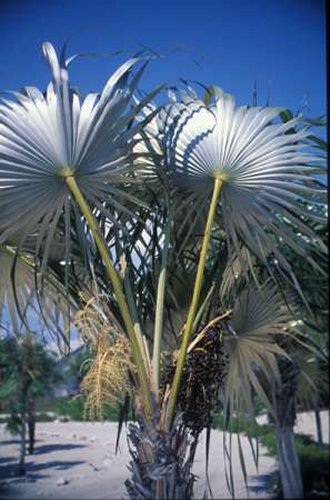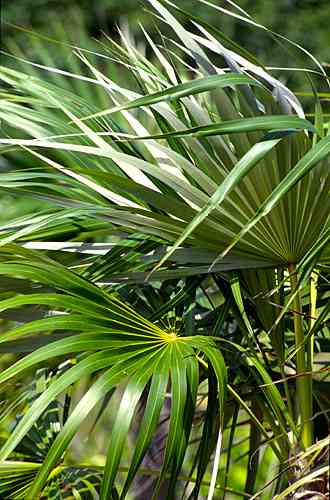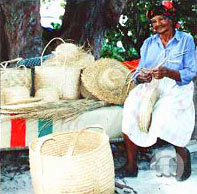The Silver Thatch Palm has played an important position in the lives of Caymanians since the first settlers in Cayman in the early 1700's. A valuable part of Cayman's natural heritage, as well as part of the landscape, it is endemic to the
The Silver Thatch Palm is both beautiful and useful. Its slim trunk often grows more than 30 feet tall, and its crown produces a profusion of small white flowers that develop into berries that ripen from green to red to black.
The leaves are also unusually tough and their broad shape makes them a useful covering. In the past, Silver Thatch Palm leaves were frequently used to thatch roofs as they were cool and rainproof. They were not, however, mosquito-proof, and needed replacing every 5-6 years (or 9 if, according to folklore, the leaves were cut at the time of the full moon).
The upper sides of the leaves are a light green while the underside is a silvery color that is particularly well-known in moonlight.


Thatching was not always restricted to roofs. Before the days of electricity, kitchens and cookrooms were often separate constructions, to reduce the risk of fire. Some had thatched walls, which created a cool cooking area. With the availability of corrugated zinc roofing in the 1920's, thatched roofs and thatching skills have now become rare.
Silver Thatch Palm leaves were also used to weave hats, baskets and fans. Shoes known as "wompers" were made with a flat leather sole and held on the foot by straps -like a thong - of thatch rope. Nowadays, hats and baskets are in demand in tourist and craft shops. Many of them are still made by those who were taught their skills over fifty years ago!
Items made from Silver Thatch Palm lasted far longer than similar products made using other materials available at the time. The tree's real value however, lies in the ability of its dried leaf to resist the effects of salt water.
